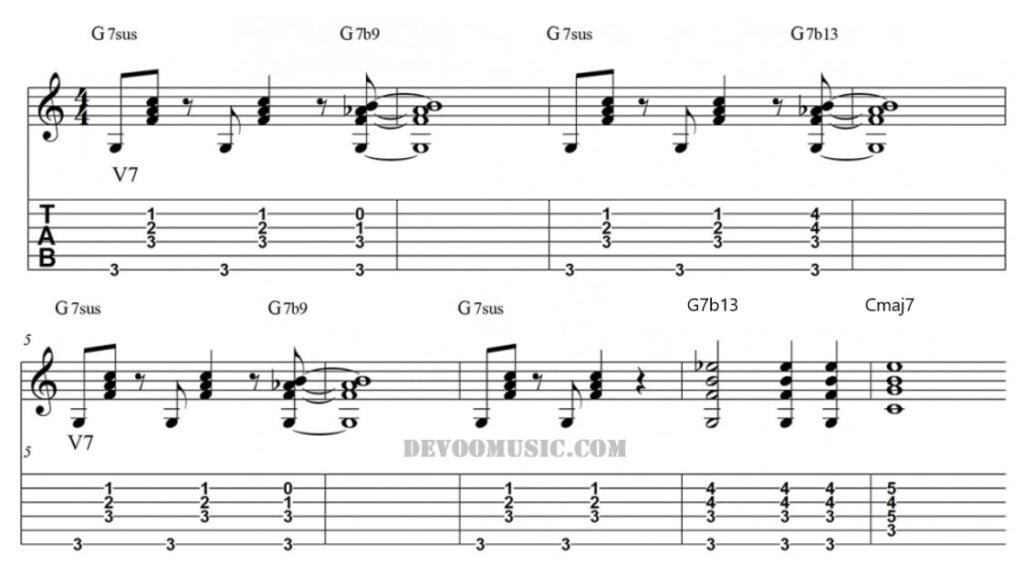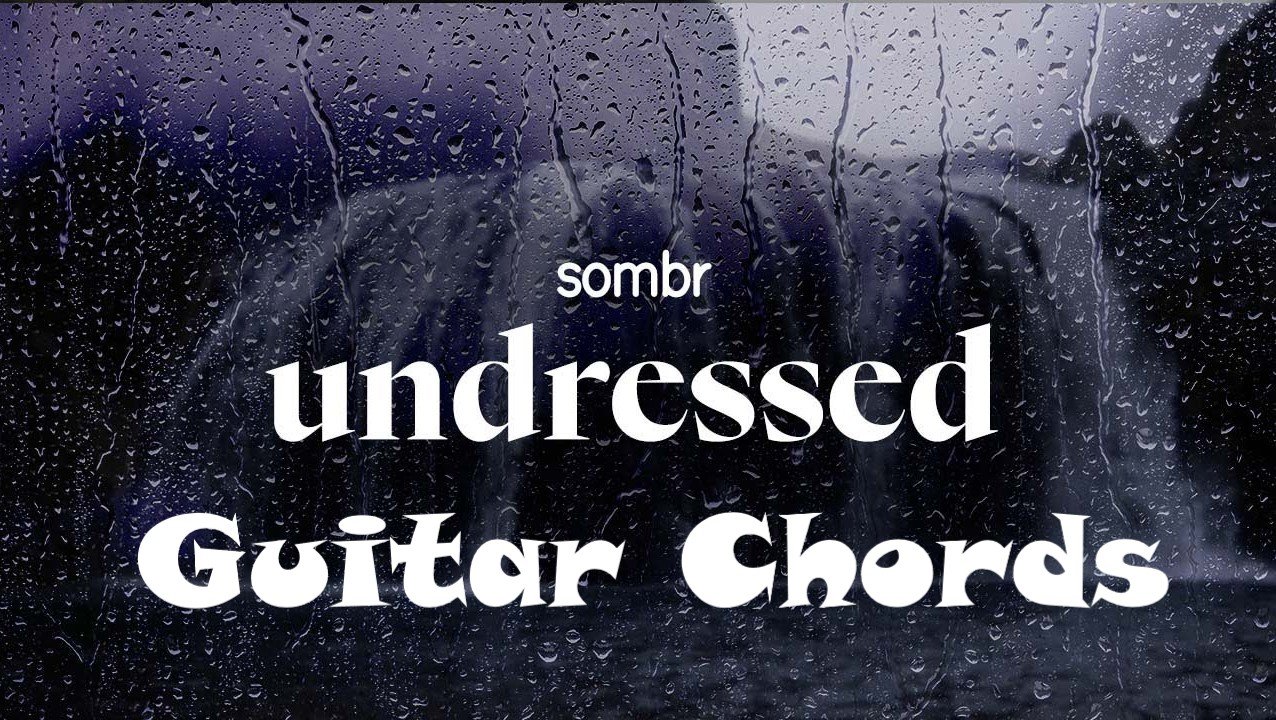Jazz Guitar Intros and Endings
There are multiple ways of taking an intro or ending a jazz tune, the truth is that you can play whatever you want.
You can start from the V of the key, simply play the last 4 or 8 bars of the tune, try to incorporate a turnaround and its several variations, the list is long….
You”ll find in this lesson 10 jazz guitar progressions with tabs, standard notation and audio files that work both as intros and endings for any jazz standards in C major.
Although all these exercises are in the key of C major, it is possible and very important to transpose them in any key.
This first chord progression is quite simple, it implies two major triads – Cmaj (G – C – E) and C#maj (G# – C# – F) with G in the bass as a pedal note. This progression is very interesting, particularly C#/G which sounds a little bit dissonant because of the #11.
Indeed, G (the bass note) is actually the #11 of C# major. As you hear in the audio file below, the rhythm is played freely from the tab. Don’t hesitate to experiment your own comping rhythms.

The second intro takes the previous harmony trick which is to play the Imaj7 chord (Cmaj7 in the example) followed by the biimaj7#11 chord (Dbmaj7 or C#maj7 if you prefer).

Once again we will play the Imaj and the I#maj chords. Please not that there are two main types of chords used in this exercise :
- Two Maj9 chords (Cmaj9 and Dbmaj9) voiced 1 – 5 – 7 – 9.
- Two Maj7add13 chords (Cmaj7add13 and Dbmaj7 add13) voiced 1 – 7 – 3 – 13.

The chord sequence used in this example is a well known progression in jazz music. Here is how it looks in Roman numeral :
IVMaj7 (Fmaj7) – ivmin7 (Fmin7) – iiim7 (Em7) – V7 (A7b13 – A7) – iim7 (Dmin7) – V7 (G13 – G7b13) – Imaj7 (Cmaj7) – V7 (G13)

This jazz ending/intro needs the use of three major triads : G major (G – B – D), F major (F – A – C) and Ab (Ab – C – Eb). You will need to keep the same bass (G) while playing the triad chords.

This sixth intro / ending progression contains 5 chords considered as the V of C major. :
- G7sus (1 – b7 – 9 – 11 or 1 – b7 – 2 – 4)
- G7b9 ( 1 – b7 – b9 – 3)
- G7b13 (1 – b7 – 3 – b13)
- G7 (1 – b7 – 3 – 5)

One basic intro and ending progression you can use on jazz standards is the turnaround (I VI II V). The turnaround offers many possibilities of variations as you will below.
Let’s start with the turnaround starting with a major seventh chord (Imaj7), including two minor chords (ii and vi) and a V7b9.

This chord sequence is a variation of the previous basic turnaround containing some approach tones, a short an easy walking bass line and an Em7 chord (iiim7), diatonic substitution for Cmaj7.

This is another and last variation of the turnaround. Unlike the previous exercise, the ivm7 chord is replaced with a VI7 chord (A7b13). Once again the four chords are connected by an easy walking bass line.

The last of the intros / endings series is Imaj7 – iim7 – V7 progression with two diminished seventh chords, Dbdim7 and Edim7 that are actually the same chords because of the symmetry. The sequence also contains a tritone substitution (bV7/7) in the last bar.






